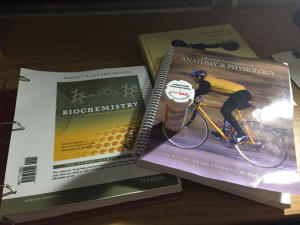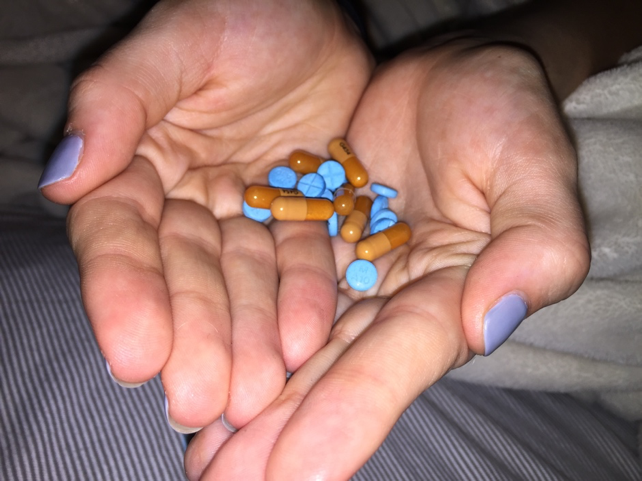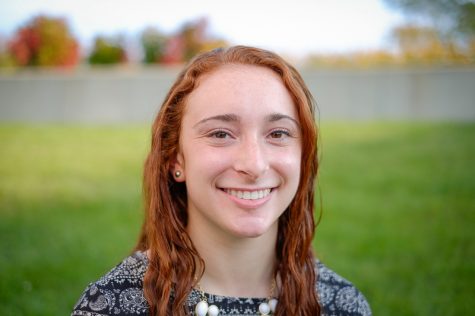Out of focus: Adderall abuse at UMass Amherst
Bailey holds an assortment of Adderall IR and Adderall XR that she brought to school with her.
AMHERST — For seven days straight, Bailey took Adderall to help study for finals.
Now a junior at the University of Massachusetts Amherst, Bailey spent the week back in spring 2017 taking an extended release Adderall in the morning, and sometimes an instant release later on. She barely slept. She barely ate. All she did was study.
The pre-med student, whose name has been changed for privacy purposes, walked through the door of her off-campus house after her last exam of finals week, trudged up the stairs and collapsed onto her bed.
“I was literally dead,” she said about returning home after her last final. “I knew I needed to take a nap, and when I laid in bed my body drained. Everything just hit me.”
It took her 48 hours to feel normal again and recover from the effects Adderall had on her body that week.
Bailey has never been diagnosed with any type of attention deficit disorder, and is positive she does not have one. She chooses to use the prescription drug to enhance her academic performance, and hasn’t taken an exam without Adderall in over a year.
“I definitely think it would be better if I didn’t need to take it, but I feel like I don’t have any other option,” she said.
Hard data is difficult to find about the proportion of college students who abuse the drug. But anecdotally, Adderall abuse is most common among college students because it enhances studying abilities. A 2011 study in the Journal of Physician Assistant Education found that 93.5 percent of those who used stimulants did so to focus and concentrate while studying.
According to the 2009 National Survey on Drug Use and Health report, full-time college students ages 18 to 22 were twice as likely as those who were not full-time college students to have used Adderall non-medically in the previous year.
Diane Fedorchak, director of BASICS — a program that helps students explore their alcohol and drug use in a non-judgmental environment — said a 2014 study showed that 7 percent of UMass students abused prescription stimulants in the previous month, and 13 percent had used them in general.
“For some of them, they think it gives them an edge,” she said. “A lot of our students work … they’re trying to balance that and their sports and their clubs and their intramurals. They are leaders trying to do well academically, and they have the pressures and the this and the ‘when do I have time to study?’ It all kind of leads into that.”
Fedorchak said there is a spike in Adderall abuse around midterms and finals.

But Bailey said she believes the data underestimates the prevalence of Adderall use at UMass.
“Our generation views Adderall how people in the past viewed cigarettes, like in the 50s, when everyone was smoking and it was just the normal thing to do,” she said.
Under the Controlled Substance Act, Adderall is a Schedule II controlled substance, meaning that the drug runs a high risk of abuse and dependence. A number of adverse effects come with abusing the drug. Negative short-term consequences include sleep difficulties, anxiety, restlessness, headaches, dizziness, irritability and depressed feelings, loss of appetite and more.
The FDA warns that tolerance, extreme psychological dependence and severe social disability have occurred from the drug’s abuse. They admit that long-term consequences of using the drug have not yet been confirmed, and this lack of research creates a dangerous uncharted territory.
One reason Adderall abuse has grown over the years is that it’s easy to find.
When Bailey packed up for school this semester, she stuffed the typical assortment of notebooks and folders into her black Victoria’s Secret backpack. Then, in the top zipper, she placed a pill bottle of prescription Adderall beside her UCard and lanyard.
Her sister has an Adderall prescription for her ADHD, and so she shares it with Bailey. Bailey refills the bottle when she returns home in anticipation of whatever academic hurdles lie ahead.
Bailey cannot recall a time she needed Adderall and was not able to find it. When she does run out at school, she has two best friends with Adderall prescriptions.
In fact, Fedorchak pointed out that friends are the most common source of the illegally obtained drug. Because Adderall is relatively easy to find and has minimal stigma, the problem continues.
“In my head, I’m analogizing it to steroids,” said Fedorchak. “Like if I think everyone else on the baseball team is juicing, then I have to juice to keep up with everyone else, and then it comes crashing down at some point.”
Email Amanda at [email protected] or follow her on Twitter @Amanda_Levenson.











